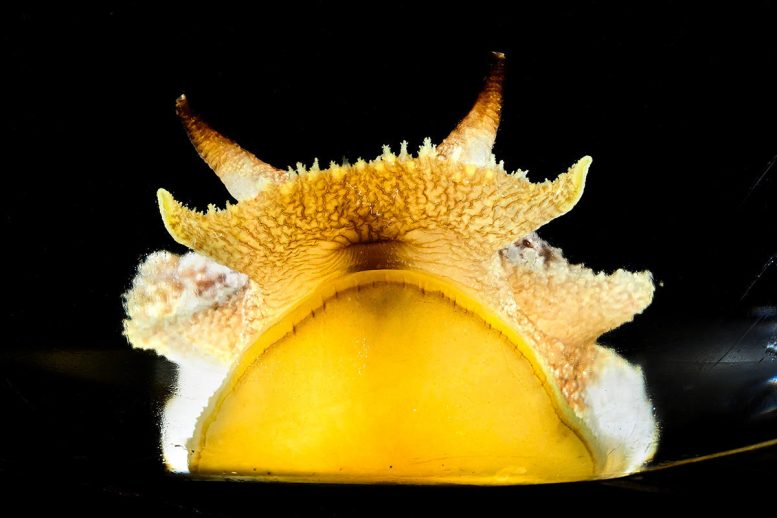
The sea slug, Pleurobranchea californica. Credit: Fred Zwicky
Before the advent of animals with segmented bodies, jointed skeletons, and appendages, the seas were dominated by soft-bodied invertebrates such as sea slugs. A recent study has discovered similarities between the brain structure responsible for the movement of sea slugs and that of more sophisticated creatures with segmented bodies, jointed skeletons, and appendages.
According to the study which was published in the Journal of Neuroscience, the findings suggest that instead of creating a completely separate set of neural circuits to control the movement of segmented body parts, insects, crustaceans, and even vertebrates like mammals adapted a network of neurons, a module, that guided locomotion and posture in much simpler organisms.
“Sea slugs may still have that module, a smallish network of neurons called the ‘A-cluster,’ with 23 neurons identified so far,” said University of Illinois Urbana-Champaign molecular and integrative physiology professor Rhanor Gillette, who led the new research.
“The question that we addressed in this study is whether the similarities we see between sea slugs and more complex creatures evolved independently or whether those with segmented body parts and appendages may have inherited their underlying neural circuitry from a soft-bodied bilateral common ancestor,” he said.
To answer that question, Gillette and his colleagues, former graduate students Colin Lee and Jeffrey Brown, videotaped sea slug movements and combined that data with recorded responses to the stimulation of nerves and specific neurons in the sea slug brain.

From left, Ph.D. student Colin Lee, molecular and integrative physiology professor Rhanor Gillette and their colleagues found parallels between the neural circuitry that guides locomotion in sea slugs and in more complex animals like mammals. Credit: Fred Zwicky
“The predatory sea slug we studied, Pleurobranchea californica, uses cilia on its foot to crawl, paddling through secreted mucus,” Gillette said. “For a postural turn toward or away from a stimulus, it simply shortens one side of its body and escapes from other predators with a frantic, rocking swim – all driven by the A-cluster.”
Previous studies from Gillette’s laboratory showed that Pleurobranchaea engages in cost-benefit calculations every time it encounters another creature in the wild. If it is very hungry, the neurons that control its attack and feeding behavior are at a heightened state of arousal and it will go after nearly anything that smells like food. Under other circumstances, it will do nothing or even actively avoid the stimulus.
“This is a good idea if it doesn’t need the food and can avoid other cannibalistic Pleurobranchaea attracted by it,” Gillete said. “All these behaviors involve how the A-cluster coordinates with action choices.”
In mammals, a special hindbrain module called the reticular system translates specific instructions for action choices from higher brain regions for posture and locomotion, Gillette said. This region then sends the motor commands down to the spinal cord for final transmission to the muscles.
“In particular, the reticular system relies on critical serotonin-producing neurons to control body movements in posture and locomotion,” he said. “In the new study, we find that similar serotonin-producing neurons in the A-cluster of sea slugs are driving behaviors like pursuit, avoidance, and escape.
“In their relative simplicity, the sea slugs resemble in many ways the expected simpler ancestor of today’s complex animals,” Gillette said. “All the major circuit modules of action choice, translating that choice into motor commands, and motor pattern-generation found in the nervous systems of complex animals are also identifiable in the simpler soft-bodied sea slugs.”
The study offers the first evidence that the circuits driving locomotion in animals with complex bodies and behaviors “have close functional analogies in the simpler gastropod mollusks and may share a common inheritance,” Gillette said.
Reference: “Coordination of Locomotion by Serotonergic Neurons in the Predatory Gastropod Pleurobranchaea california” by Colin A. Lee, Jeffrey W. Brown and Rhanor Gillette, 24 April 2023, Journal of Neuroscience.
DOI: 10.1523/JNEUROSCI.1386-22.2023
The study was funded by the Office of Naval Research.

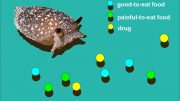

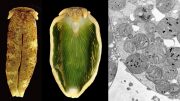
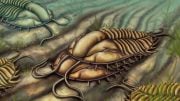
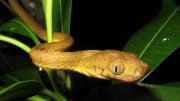

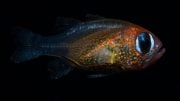
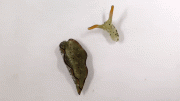
Be the first to comment on "Millions of Years Ago – Surprising Findings Reveal That Brain Circuits for Locomotion Evolved Long Before Appendages and Skeletons"